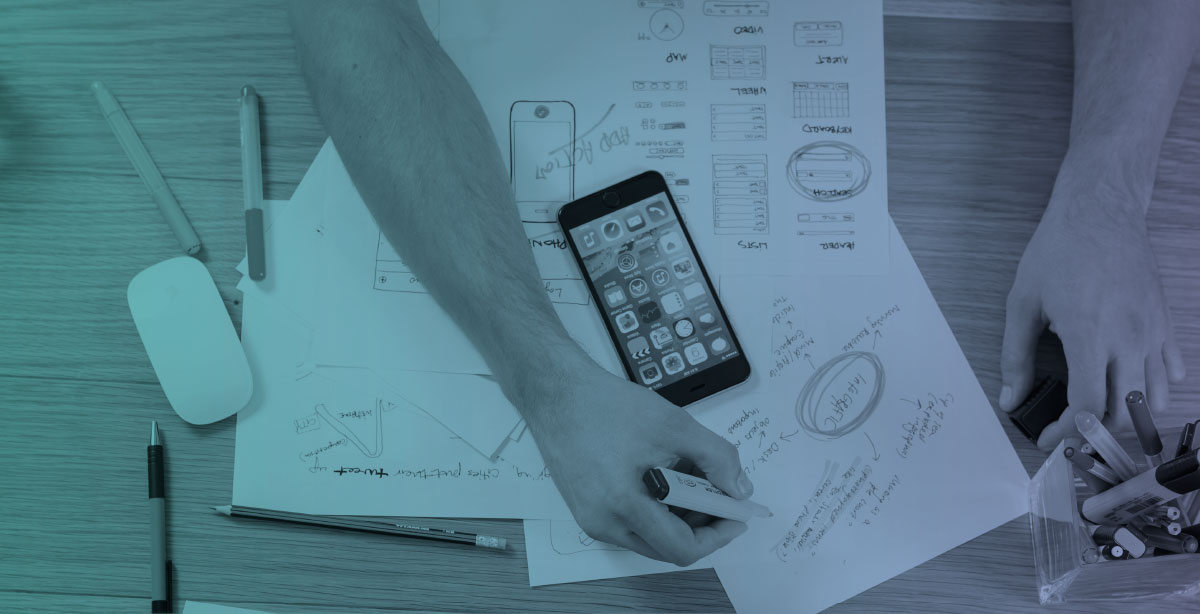- MODULE 3 Into Action - Get to Work!
- Taking Initiative
- Creativity
- Learning from experience
- Planning
- Time Management
- Change Management
- Problem Solving
MODULE 3 Into Action - Get to Work!
The focus of this module is the theme “Into Action: Get to Work!”. The module focuses on soft skills which enable the delivering of work and outcomes using self-related skills in collaboration with a range of other skills.
The module is divided into 7 skills, comprising 2 exercises per skill (14 exercises in total). Each unit focuses on a soft skill; the definition, why it is important and exercises to aid the development of, or reflection on, the skill. Upon completion of the module (and its 7 units) learners will have developed their abilities regarding the following soft skills:
- Taking initiative
- Creativity
- Learning from experience
- Planning
- Time management
- Change management
- Problem solving
MODULE 3 Into Action - Get to Work!
Taking initiative (ownership)
Acting and making steps of one’s own accord.
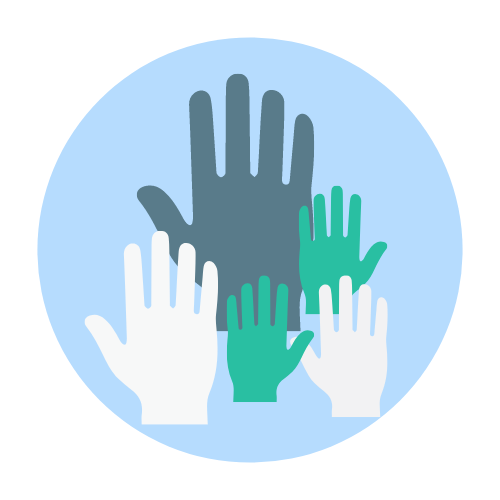
Introduction to the soft skill
When you show initiative, you do things without being told; you find out what you need to know; you keep going when things get tough; and you spot and take advantage of opportunities that others pass by. You act, instead of reacting, at work. Taking the initiative means not waiting for someone to come and tell us what to do , but rather taking action and tackling issues.
Why is this an important skill?
Using your initiative makes you a desirable candidate for jobs and opportunities as you are showing you can think for yourself, as well as proving that you will continue to develop and grow in your role. Initiative will allow you to get ahead of the competition and ensure you are up to date with what’s going on in your career sector. People who show good initiative often win awards and promotions as they generate exciting and beneficial ideas.
OERs + Icebreakers
Have a look at some of the following materials before completing the exercises. Reflect on how and when these skills have been applied by you or someone else.
-
- Give an example of a time when you showed initiative https://targetjobs.co.uk/careers-advice/interview-questions/320909-give-an-example-of-a-time-when-you-showed-initiative-tricky-graduate-interview
Estimated time:
5 minutes
Exercises to help you develop this skill
Exercise 1: Circle of Concern and Influence - S. Covey
Overview:
This is a self-reflective exercise to help individuals consider whether they are proactive, and to assess whether they tend to take initiative or not.

Estimated time to complete: 2 - 10 minutes

Materials needed:
-
- Pen
- Paper or a word document

Difficulty: Easy
The activity:
Imagine a circle, and within that circle, you put all of your concerns: your health, job prospects, kids, finances, etc. Anything and everything that causes you to worry or keeps you up at night. Even the little stuff. This is your Circle of Concern.
Now imagine a circle within that Circle of Concern. Inside that circle, you put the concerns that you have some or complete influence on. This is your Circle of Influence. You can download your circles template and work on it.
Source: https://www.artofmanliness.com/articles/7-habits-proactive-not-reactive/
Now take some time to think about things that you would put on the Circle of concern and calculate how much time you will need.
Make some notes
What can we observe?
If you have spent more time listing things that belong to the circle of concern it is likely that you tend to be reactive rather than proactive. This means that, instead of taking initiative, you tend to wait for someone else to take it for you.
If this is the case, don't panic! The objective of this exercise is to gain awareness about this soft skill and work on ourselves.
Exercise 2: Commitments to become more proactive
Overview:
This exercise helps individuals face problems, monitor attitudes towards them and take action using the Circle of Concern.

Estimated time to complete: 3 - 10 minutes

Materials needed:
-
- Pen
- Paper or a word document

Difficulty: Easy
The activity:
Phase 1:
One action to make a change in our attitude in the workplace to try to be more proactive is to pay attention to our language. How we speak guides how we see the world. If most of your language is reactive, you’re likely going be more reactive. If it’s proactive, you’ll be more proactive.
Some reactive phrases to look out for:
- There’s nothing I can do.
- That’s just the way I am.
- He makes me so mad.
- They won’t allow that.
- I have to do that.
- I can’t.
- I must.
- If only.
Whenever you catch yourself using one of these reactive phrases, replace it with a proactive one:
- Let’s look at our alternatives.
- I can choose a different approach.
- I control how I respond to this.
- I choose.
- I prefer.
- I will.
Phase 2:
Take action (no matter how small). As you take action, you’ll begin to show yourself that you can have an influence on the world, which kickstarts a virtuous cycle of proactivity.
Look at your Circle of Influence. What’s an action you can take to move one of its items in a positive direction? Your actions don’t have to be big. In fact, they shouldn’t be big. Whenever you face a problem, break it down into the smallest parts possible and tackle each part one by one. It makes the problem less daunting and more concrete.
Next steps and evidence-based story
Having completed these exercises, can you think of any evidence you have that demonstrates your initiative. What would someone who knows you well say about your taking initiative skills?
Remember that soft skills are not just learnt in the workplace! Draw from all your life experiences (both in and outside the workplace).
Look at the examples below for some guidance
- You have seen that someone broke a glass bottle and it is on the floor in the shared office kitchen. No one is around when you walk in and spot it. You can either clean it up or you can leave it there and no one would ever know you saw it. Taking initiative means you are the person that cleans it up. You do not think twice about cleaning it up: you just do! You do not leave it there, and pretend you did not see it, or leave it for someone else to deal with. You either clean it up yourself or you notify the cleaning staff, but you do not just leave it there and walk away.
- During my time at university, I worked part-time as an assistant in a supermarket. Even though this was only a part-time job, I felt that it was important to take initiative in order to prove that I am a responsible member of staff and to develop the skill of taking initiative for future careers. In order to prove that I was able to take initiative, I regularly took on extra responsibility such as cleaning, dealing with enquiries and preparing for deliveries. This was acknowledged by my bosses and made me feel more confident.
Write an example of when you have demonstrated your ability to take initiative.
MODULE 3 Into Action - Get to Work!
Creativity
The ability to create new, make unique combinations and to spot opportunities

Introduction to the soft skill
Creativity at work refers to an individual’s ability, mental agility and openness to explore and combine elements, knowledge, connections, resources and concepts to create new, unexplored and purposeful solutions with added value, and to spot opportunities.
Why is this an important skill?
Creativity is an enabling skill and quality that leverages work performance onto a new level. It is needed, for instance, in problem solving, innovation, creating new concepts, combining Information, project work, dealing with customers and co-workers, increasing user-orientation, spotting opportunities, optimising, etc. It not only helps save resources and differentiate from competitors, but it also functions as social glue and facilitates teamwork.
Creativity is sector-agnostic. Its main elements are imagination, curiosity, playfulness, risk-taking, tolerating insecurity and open-mindedness. Everybody is creative, but so-called creativity killers can hamper and destroy creativity at personal and collaborative levels.
Among creativity killers are negative, pessimistic and egoistic attitudes, inflexibility, holding onto viewpoints and solutions, competition, punishment, blind following of rules, not listening to others, playing secure, fear of failure, and keeping up the appearances. One should recognise and pay attention on these creativity killers in their own activity and the surrounding culture.
OERs + Icebreakers
Have a look at some of the following materials before completing the exercises. Reflect on how and when these skills have been applied by you or someone else.
-
- A powerful way to unleash your natural creativity - Tim Harford https://youtu.be/yjYrxcGSWX4
- The Art of Creativity - Taika Waititi - TED Talk: https://youtu.be/pL71KhNmnls
- THE CREATIVE BRAIN (Promo) by David Eagleman: https://creativebrainmovie.com/
- Develop Your Imagination: https://youtu.be/CkL9eRJlnic
- Imagination: It’s Not What You Think. It’s How You Think - Charles Faulkner -TEDxIIT: https://youtu.be/QMu5XLux_GA
Estimated time:
60 minutes
Exercises to help you develop this skill
Exercise 1: Super Me
Overview:
In this exercise, individuals can practice how to engage in free idea generation (the divergent phase); to filter and narrow ideas through specifications (the convergent phase); and to combine them. Generating ideas freely without limitations and criticism are essential for creativity.

Estimated time to complete: 20 - 50 minutes

Materials needed:
-
- Pen
- Paper or a word document

Difficulty: Hard
The activity:
Creativity helps to open minds, create mental flexibility and tolerance to failure and insecurity, and to find new combinations, ideas and opportunities. There are three rules: (1) do not use a computer, tablet or other such devices; (2) write by hand, as it is essential for thinking, understanding and imagination, and last (3) do not limit yourself but have fun!
- Use 15 minutes to generate ideas on a sheet of paper how would your “Super Me” be. The Super Me can be related to work, hobbies, studies or life in general. What would be your skills and characteristics? What would you do with them? You can invent new ones of even enhance your existing characteristics. Use your imagination and do not let creativity killers get in your way! This is the idea generation phase (the divergent phase).
- Next think about the real world and the limitations of looking at the skills and characteristics you listed in the previous phase. Real life limitations create specifications and frames which filter the ideas and help to narrow and combine them, which you will use in the next phase. White these limitations next to each characteristic or on another sheet of paper.
For instance:
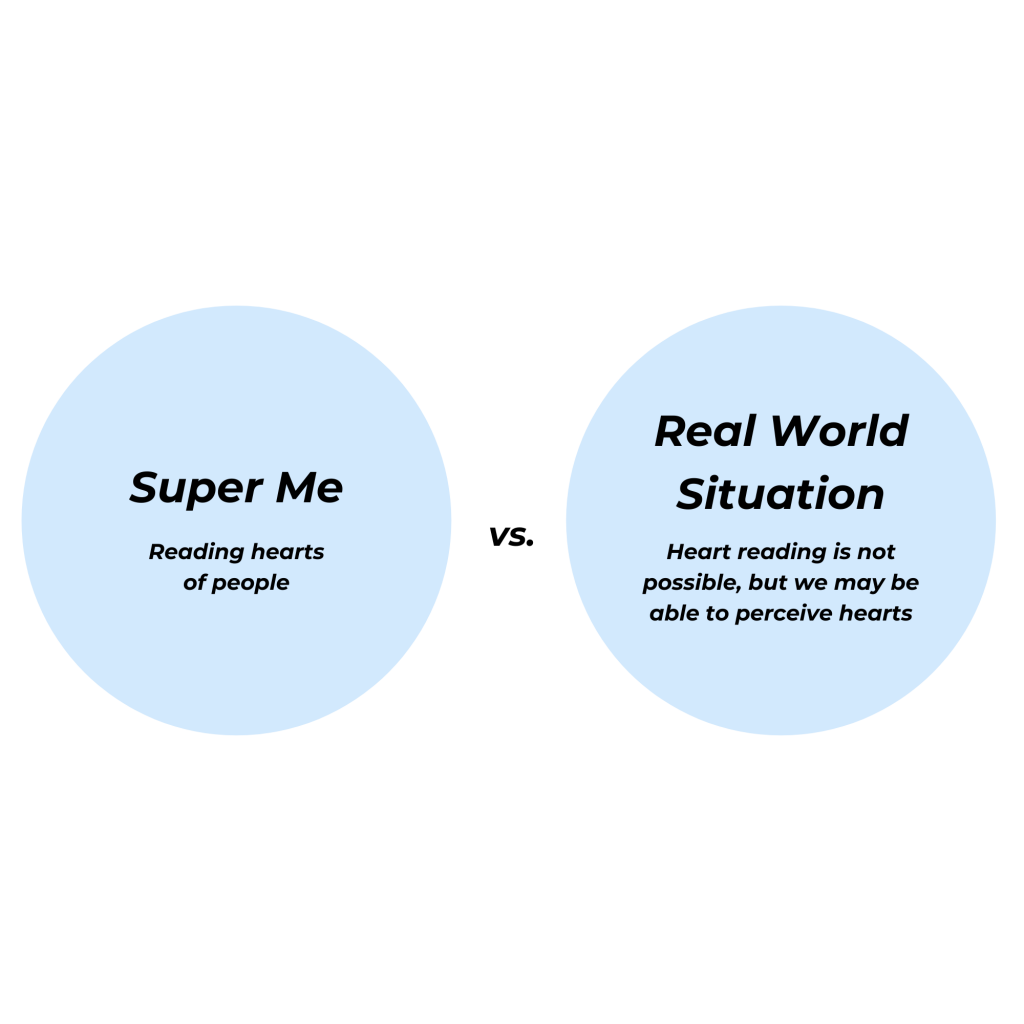
Use 5 minutes for this list of specifications of the real world.
- Lastly, look at the description list of your Super Me characteristics and the list created in point 2. Select one real life scenario or situation for this, name it (you can also add an image that tells about it) and write under it or around it the skills and characteristics of the Super Me you can use in it and how. What does this tell about you and your skills? For instance, healing as a super power reveals empathetic and caring qualities. Use 20 minutes for this last phase of the exercise. You can use mind-mapping, lists or other methods for this work.
Exercise 2: Opportunity Spotting
Overview:
In this exercise, individuals will focus on transforming the negative into positive opportunities to strengthen creativity.

Estimated time to complete: 30 - 60 minutes

Materials needed:
-
- Pen
- Paper or a word document

Difficulty: Hard
The activity:
Opportunities often lie in plain sight. For instance, setbacks and closed doors can be transformed into opportunities. In this task, the focus is on transforming the negative into positive opportunities. For this exercise you will need 2 sheets of paper (A3) and a few pens of different colours.
- Take two A3 sheets of paper. On one, write ‘PAST’ on the top and on the other write ‘FUTURE’ on the top. Next:
- Past sheet: Think about a setback or failure at work, in a hobby or during studies in the university. Write this in the centre of the ‘PAST’ paper.
- Future sheet: Think about a trend that might negatively impact your work, educational profile or job search in the future. Write this in the centre of the ‘FUTURE’ paper.
- Make a mind map of both sheets. Start from the centre of the paper where you have added the challenge. Write on the first layer around the centre the elements that immediately influence the issue in the centre. Create 2-4 layers of impacting issues for both mind-maps until saturated.
- Once ready, start identifying opportunities on both mind-maps. Circle the opportunity factors with a different colour and write your opportunity idea and its justification below the mind map on another piece of paper or a post-it note.
- You can present your ideas to your peers, family or friends in order to obtain feedback.
You can keep the mind-maps and modify them, or recreate them, with time and as the situation will change.
For the mind-maps, please remember that this is not a research exercise but a creativity exercise. Keep your mind open, add even silly ideas and be observant and creative.
Next steps and evidence-based story
Having completed these exercises, can you think of any evidence you have that demonstrates your Creativity. What would someone who knows you well say about your Creativity skills?
Remember that soft skills are not just learnt in the workplace! Draw from all your life experiences (both in and outside the workplace).
Look at the examples below for some guidance
- Once, at work, I had to provide translations for a website. There was a critical deadline and at the very last minute, someone wanted to add text in Spanish. I had no translators available anymore. There would not have been time for it as it was a matter of a few hours. Although my Spanish is rather basic, I rolled up the sleeves. My Italian is fluent, so I typed the desired sentences in Google Translate in Italian and this translated them into Spanish. As both languages are Romanic, this way the grammar structure was more correct. I googled these to find out how successful the translations were and corrected the language based on the suggestions. I also looked at existing websites for similar words and their use, and used these. Afterwards, I checked the translations with a friend of mine. It took a few hours and we were able to deliver things correctly by the deadline.
- Another time, there was a very minimal marketing budget and even less time. My solution was to enhance social media and people to do part of the work. Hence, we created challenges and tasks which were posted and distributed in Social Media and added a hashtag to use. This way, posting challenges and tasks, people did part of the work to make the project known.
Write an example of when you have demonstrated creativity.
MODULE 3 Into Action - Get to Work!
Learning from experience
Utilising lessons learnt by applying them in the future.

Introduction to the soft skill
There is a famous quote by Chinese philosopher and politician Confucius which goes like this: "Tell me and I forget, teach me and I may remember, involve me and I learn."
Learning from experience is a highly effective form of learning. Rather than attempting to better understand any new subject, it facilitates the establishment of behaviours and habits; and this has a lasting change in behaviour in general. According to the 70 20 10 Model (initially created by Morgan McCall and the Centre of Creative Leadership in the 1980s), 70% of everything we know comes straight from experience.
Why is this an important skill?
Being able to learn from experience is extremely important for any given professional environment. Workplace contexts go through continuous change, and thus professionals must constantly enhance their capacity to adapt modes of practice according to those changes. Beyond the benefits of learning from experience for professional development, it is highly effective in tapping into the expertise that already exists in an organisation or company, since it involves peer-to-peer learning and eventually develops new skills, such as team-work, management skills and leadership skills. This happens because through learning from experience, people, employees and employers get involved in a process of giving and accepting constructive feedback, thinking from the perspective of each other, and complementing each other’s approach to solving problems, carrying out activities and most importantly reflecting on this process and learning from it.
OERs + Icebreakers
Have a look at some of the following materials before completing the exercises. Reflect on how and when these skills have been applied by you or someone else.
The sources and readings below are complementing the basic, introductory material above. They help in understanding the process of learning from experience, as well as the benefits of experiential learning as a learning mode:
-
- What is the experiential learning cycle? https://www.growthengineering.co.uk/what-is-experiential-learning/
-
- The 70:20:10 model (check the video included) https://www.businessballs.com/self-management/the-702010-model/
-
- How to Help Your Employees Learn from Each Other (Palmer K.; Blake D. – HBR, 8/11/2018) https://hbr.org/2018/11/how-to-help-your-employees-learn-from-each-other
-
- The Best Way to Learn is From Experience, But Experience Itself is Not Enough https://reflectd.co/2014/04/06/the-best-way-to-learn-is-from-experience-but-experience-itself-is-not-enough/
-
- Learning to Learn from Experience (Ellen Langer) http://www.ellenlanger.com/blog/121/learning-to-learn-from-experience
Estimated time:
30 minutes
Exercises to help you develop this skill
Exercise 1: Learning from experience: Not simply ‘hands-on’…
Overview:
This exercise is designed to help individuals demonstrate the kind of questions one has to answer in order to reflect on experiences meaningfully and add the ‘minds-on’ aspect. This is often missing from the ‘hands-on’ concept.

Estimated time to complete: 5 - 10 minutes

Materials needed:
-
- Pen
- Paper or a word document

Difficulty: Medium
The activity:
The fact that most of our knowledge comes from experience, doesn’t mean that experience alone is magically able to teach us valuable things, while we are merely ‘engaged’ in an experiential situation. There is a need to reflect on our involvement, to track and be aware of all the idea-building aspects as we go, which will be able to make our learning from experience lasting, applicable in future situations and transferable.
This exercise is simple; its goal is to demonstrate the kind of questions one has to answer in order to reflect on experiences meaningfully and add the ‘minds-on’ aspect which is so often missing from the ‘hands-on’ concept. Consider the following example which makes a very practical point about learning from experience:
The world of sports brilliantly offers itself as a field where ‘learning from experience’ is potentially the only means to progress, to win, to continue existing as a team or athlete. Choose football, basketball, even individual sports, such as high-jumping or running. Team sports serve, however, as the best examples. Imagine a team which is merely playing game after game without reflection.
This won’t help in understanding and learning from the process. Nothing would be drawn from the game experience without a deliberate process of reflection following every game experience.
Instead, the team in collaboration with its coach pose questions such as:
- What is working in the way we play?
- What does not?
- What is working for the opponent team?
- What do we need to do now? How will we follow this up?
This type of question facilitates the process of learning from experience at two levels: first, during the engagement with experience (Exercise 1 deals with that phase); and second, at a meta-cognitive level, when reflecting upon the experience, how one dealt with it, what is to be learned from this experience (Exercise 2). This eventually leads to an increased awareness of the ‘learning‘ aspects that an experience offers, to understand the components of the hands-on experience as a learning experience, to apply and even transfer this knowledge to future situations; thus, adding the ‘minds-on’ to the ‘hands-on’ level of experiencing.
What you can do
Think of any situation in which you have been involved as an actor to reach a clear goal. It could be from scheduling a trip, carrying out a task at work, or dealing with a longer assignment such as a project, organising an event, doing some research to provide an article about it etc. Reflect on your steps towards organising the course of action and try to remember all the stages of the process, as associated with certain actions having been taken by you or in collaboration with others. Break the process down in terms of answers to the questions above, by adapting them to your situation. For example, in the place of ‘opponent team’, you can use the possible feedback (if there was one) from the ones expecting the outcome of your task. At the end, try to put down on paper the answers you might have given to the question “What do I need to do now? How will I follow this up?”.
Having reached this point, please proceed to Exercise 2.
Exercise 2: …but always ‘minds-on’ too!
Overview:
This exercise facilitates the process of learning from experience at a meta-cognitive level. It helps individuals reflect on an experience in terms of how one dealt with it and what is to be learned from it.

Estimated time to complete: 10 - 25 minutes

Materials needed:
-
- Pen
- Paper or a word document

Difficulty: Medium
The activity:
Stick to your situation with an experience as used in Exercise 1. Now, you can move to the meta-cognitive level, where learning from experience begins to happen and is gradually subsumed in you. The following set of questions will guide you through this process. Reflect on the answers and write them down on paper to have an overview afterwards:
- While engaged in this experience, what were the highlights during the process?
- Identify the difficulties and the points where things got difficult.
- What do you understand now? How would you account for this?
- What is it that you still don’t understand?
- Was there any opinion, perspective, possible input that you left out of the equation? If yes, why did you omit it? If this was not the case, to what extent did you include it in your understanding?
Next steps and evidence-based story
Having completed these exercises, can you think of any evidence you have that demonstrates your Learning from experience skills? What would someone who knows you well say about your skills in this area?
Remember that soft skills are not just learnt in the workplace! Draw from all your life experiences (both in and outside the workplace).
By concluding this module with its exercises, you can associate the meta-cognitive level of the process in learning from experience to improve understanding and application readiness of other soft skills, especially those which require collaboration with others like for example ‘Problem solving’ and ‘Mobilising others’, where learning from experience can be applied (former skill) and transferred (latter skill).
Look at the example below for some guidance
Optimising brainstorming in a ‘Learning from experience’ process.
In the company where John works, when a new project is to be organised and implemented, the following practice takes place:
All involved employees go through an idea sharing process, which not only brings all ideas at hand, but also helps employees understand each other’s personality and work attitude. Firstly, all involved employees write down 5-6 ideas individually about an irrelevant topic; a topic that has nothing to do with the project at hand.
Next, they commonly narrow down all ideas to 3 or 4, however without discussing positive and negative aspects of the ideas in total.
Then the group goes through the same process, only this time addressing the project at hand. The group eventually narrows down all ideas to 3 or 4 in a similar manner.
The experience is discussed; both processes (individual and collective) are compared in terms of how individuals performed in the flow of ideas; if they held back ideas considering them as not appropriate or if they were dismissed by the group; and how the team dynamics worked in creating and choosing ideas.
Write an example of when you have demonstrated learning from experience skills.
MODULE 3 Into Action - Get to Work!
Planning
The ability to prioritise, organise and follow up
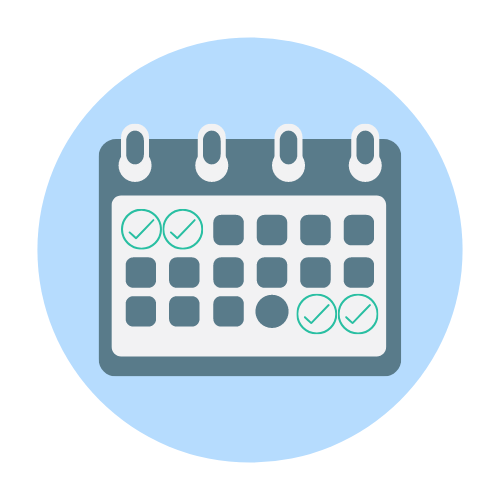
Introduction to the soft skill
Planning means the ability to set long-, medium- and short-term goals, and to see the scope of the work and the project as a whole and in relation to other activities and issues. Someone who has strong planning skills is able to define priorities and action plans and adapt to unforeseen changes.
Why is this an important skill?
Planning skills are highly valued in employees as they help to achieve results consistently, prioritize, achieve goals and be flexible. Planning at work helps one to manage time, tools, staff and resources, and to adapt, anticipate and prioritise them according to the situation at hand to reach the intended goals and outcomes. Planning affects work at all levels as any work activity and role requires setting goals, and planning of tasks, projects, workload, resources, tasks, people, risks, but also evaluation and monitoring of the work.
Planning skills also have financial benefits as careful planning and implementation and adaptation of the planned work saves time, money and resources, and positively impacts other activities and areas as well, for instance work well-being, the overall performance of an organisation and readiness to respond and solve problems.
OERs + Icebreakers
Have a look at some of the following materials before completing the exercises. Reflect on how and when these skills have been applied by you or someone else.
-
- 6 Rules to be Effective at Planning and Organizing https://www.conovercompany.com/6-rules-to-be-effective-at-planning-and-organizing/
-
- Planning and organising https://www.thebigchoice.com/graduate-jobs/careers-advice/planning-and-organising
-
- Top Organizational Skills Employers Value with Examples https://www.thebalancecareers.com/organizational-skills-list-2063762
-
- University of Bradford: Planning and Organising https://www.bradford.ac.uk/careers/develop-skills/planning/
-
- How to Be More Organized https://www.mindtools.com/pages/article/newHTE_76.htm
Estimated time:
30 minutes
Exercises to help you develop this skill
Exercise 1: Life Events
Overview:
In this exercise individuals will observe planning through life events.

Estimated time to complete: 10 - 25 minutes

Materials needed:
-
- Pen
- Paper or a word document

Difficulty: Hard
The activity:
- Choose one big event in your life that has taken place and that has required planning. It can be, for instance, moving to new place, a big life event, such as a wedding, the birth of a child, a birthday or graduation, or another big change in life. Write it down.
- Think about the things you had to consider while planning this event.
- a. What were the primary phases and priorities to think about in planning and what comes second?
- b. What were important deadlines and timetables? Think both short-term and long-term deadlines.
- c. Set up action plans to implement the tasks according to the importance of actions and timelines to deliver those.
- d. List all people or groups related to the event. When listing people or groups, make sure you think of different situations or actions they will participate in.
You can use a Gantt chart and different tables for this work
- Make “must lists” of things that were necessary for implementing the actions. Set the most critical points, activities and deadlines and continue with the less critical ones. Also list actions with flexibility in delivery although still mandatory to implement.
- Finally, analyse how you succeeded in planning and carrying out the event and what you learnt about this. What skills and competences did it develop in you that are useful in work life?
Exercise 2: Planning a Project
Overview:
This exercise requires individuals to bring planning to a work environment by planning a project using needed materials and tools.

Estimated time to complete: 20 - 35 minutes

Materials needed:
-
- White board
- White board pens
- Post it notes
- Pen
- Paper or a word document

Difficulty: Hard
The activity:
It is time to bring planning to a work environment. Use any materials and tool to make notes and plan the project. For instance, whiteboards, post it notes and Gantt charts can be useful, but simply writing and post its notes are useful when sketching the process.
- Choose one project you have implemented in a professional environment and situation. It can be from your sector, from another sector, a study project or other demanding project outside from work.
- Now think all the elements you need to implement in the project and make an action plan for the project, considering all listed recourses and actions:a) actions such as meetings, travel, deliveries etc.b) resources: people, time, money, materials, equipment, outsourced work, etc.
Make a proper Gantt chart for activities and a timeline, calculate the resources (e.g. salaries, subcontracting, travel, etc.), and think about any other relevant element in planning, including the main milestones.
- Imagine there is a sudden major change and you have to adjust your plans radically. A radical change can be, for instance, a cut in the costs, an important part of work cannot be completed or the planned time will be reduced radically. Modify your plan so that it is possible to carry out the work despite the major change. Consider this change from different perspectives to find solutions for the new situation with the same outcome.
- Analyse the outcomes and plans before and after the major change. What positive outcomes you can find from change and what did you learn from it?
Next steps and evidence-based story
Having completed these exercises, can you think of any evidence you have that demonstrates planning skills? What would someone who knows you well would say about your planning skills?
Remember that soft skills are not just learnt in the workplace! Draw from all your life experiences (both in and outside the workplace).
Take a look at the examples below for some guidance
- Before the Internet took over, I had to move to another country (a few times actually) without anyone’s support. I could do the planning in three parts: (1) the initial phase of getting to the country and where I would stay before finding the house, including what I would bring there and what I would buy from there (kettles, bed linen, etc.); (2) looking for the house – where to find housing (newspapers, information boards, real estate…) and looking for the house, and how long this should last. This includes learning about suitable areas, the public transportation, supermarkets and other services in those areas. Socialising and asking around helped me a lot in this process; (3) settling into the house – electricity, phones and other services, kitchen and other house equipment, etc. Each of these three phases became its own project, and establishing a timeline and budget for each phase helped me a lot.
- Organising my first big international seminar did not come easy. There were plenty of things to organise starting from the date, theme, possible speakers – contacting and confirming them including the travel organisation and the fee, replacing speakers if needed, finding the location for the seminar, arrival information, advertisement of the seminar, organising participation fees and payments for catering (lunch, dinner, refreshments) with special diets, taking care of all the guests and speakers before, during and after the event, printing the materials for the event, filming, decoration and other practical organisation of the event. In addition, I had to assist with any additional tasks. What made the event more interesting was that after confirming the speakers, we actually had to change the date of it, and start the discussions with the speakers again. Careful planning with specific roles for each activity, and ensuring the planning materials were available for all was of a great assistance in the process. In addition, regular meetings between the team helped this process.
Write an example of when you have demonstrated planning skills.
MODULE 3 Into Action - Get to Work!
Time management
The ability to recognise different uses of time and value time as a resource.
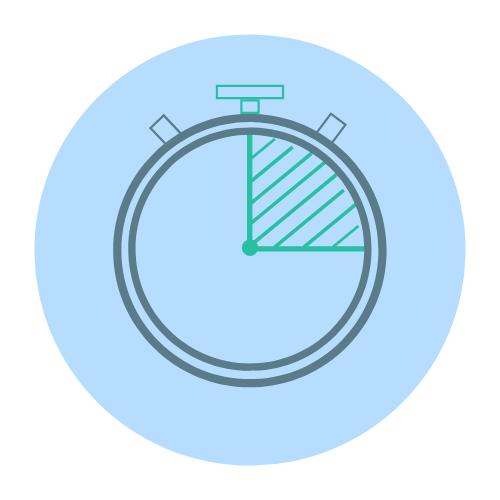
Introduction to the soft skill
Time management in the workplace means being able to deal with the following:
-
- Using time effectively towards achieving well defined goals
- Developing and being able to apply relevant time-management procedures (e.g. plans, time-monitoring tools and practices etc.)
- Balancing conflicting demands/tasks in terms of urgency (prioritising)
- Helping/collaborating with others in time-management issues or requirements
Why is this an important skill?
Time management as a skill is extremely important, because it is directly involved with productivity, efficiency and most importantly reduced stress. There is a provocative - yet ‘enlightening’ - approach to time management, which argues that time cannot be managed in any case, but rather, it is ourselves to be managed during time, which, in turn, means that it is our attention and focus that we should focus upon in terms of ‘managing time’.
The most productive people manage their time exceptionally well, because they focus on results, not activities. It is about those results which are important for a well-balanced life, and which are welcomed by any employer, collaborator, colleague in your professional life such as:
-
- Achieving goals (by tracking those tasks that lead to them)
- Producing quality work
- Meeting deadlines and being consistent
- Having an excellent professional reputation
- Having better work-life balance
- Experiencing less stress along the way
OERs + Icebreakers
Have a look at some of the following materials before completing the exercises. Reflect on how and when these skills have been applied by you or someone else.
-
- Time management – What’s the real issue (David Allen / Getting things done) https://gettingthingsdone.com/wp-content/uploads/2014/10/TimeManagement.pdf
-
- An exercise in time perception - Matt Danzico | TED-Ed (video) https://ed.ted.com/lessons/an-exercise-in-time-perception-matt-danzico
-
- Management Study Guide – Time management techniques: https://www.managementstudyguide.com/time-management-techniques.htm
-
- BBC (by José Luis Peñarredonda) - Why time management so often fails: https://www.bbc.com/worklife/article/20180904-why-time-management-so-often-fails
-
- Lifehack – Time management doesn’t exist, but here’s what does… (by Sarah Liddle): https://www.lifehack.org/334192/time-management-doesnt-exist-but-heres-what-does
-
- Exactly what is time… - Time in different cultures: http://www.exactlywhatistime.com/other-aspects-of-time/time-in-different-cultures/
Estimated time:
30 minutes
Exercises to help you develop this skill
Exercise 1: Mining for time
Overview:
This exercise can help individuals gain an overview of how, and to which ends, they use time in their everyday life.

Estimated time to complete: 10 - 30 minutes

Materials needed:
-
- Pens: red, yellow and green
- Paper or a word document

Difficulty: Medium
The activity:
This exercise will eventually help you to:
- Identify time spent in several activities (routine) and non-productive time.
- Identify unexploited (blank) time slots that are available throughout the day and could be turned into useful, productive ‘time units’ towards achieving a specific goal (professional or personal), or supporting/starting an activity which is beneficial for you or others.
- Re-consider and evaluate the amount of time you dedicate to certain activities, compared to the benefits of these activities for you.
In order to do the exercise, you will need 3 blank pages. Draw on each page a table with 4 columns and 6 rows so that you have 24 boxes which represent the 24 hours of a day (see figure below). Download your time-plot here.
Starting with page 1, you must fill in the boxes relating to each day, identifying regular routine activities like sleeping, eating, bathing etc., considering that 1 box equals 1 hour.
On page 2, you should think of your professional self, or if you have no professional experience, think of yourself in the course of a day where certain activities have to be conducted. Fill in the relevant boxes with time spent on non-productive activities during worktime (e.g. breaks, generic, non-work-related discussions etc.). Try to be as concise as possible.
Having done this, use page 3 to integrate all data from pages 1 and 2. All empty boxes stand for your actual productive time.
This simple time map offers you a visual canvas of where and on what activities you spend time daily. You can use it as a first step towards time planning and time management. Think of the results regarding time spent, as described in the time boxes. Consider the empty time boxes (your productive time) in terms of quantity and quality: What are the results they are leading to? Evaluate the time spent on certain activities and see if something could be adjusted.
Try to ‘sense’ imbalance, be sincere with yourself and see to what extent the way you use time is satisfactory for you or not. Think about the involvement of others (family, friends, colleagues etc.) and the ways they influence your time map. Identify dependencies, obligations, responsibilities within this aspect and see how these impair (or benefit) your time map, exploring how rigid or flexible they are.
Use a red marker to mark the time boxes which you feel ‘beg’ for intervention, a yellow marker to mark the boxes which seem to offer themselves for improvements/changes, and a green marker to mark the boxes that seem to be just fine for you as they stand. Following this, try to reschedule the following days according to your interventions. Revisit your map a few days later and write down any positive or negative outcomes. Try to clearly and directly associate these outcomes with the interventions applied. Repeat this process and notice if you gradually gain any of the following:
- Better focus on your objectives
- An ability to remember even the smallest tasks and activities
- Better performance in terms of prioritising
- A feeling of control
- A more profound sense of achievement
Remember, you cannot manage yourself absolutely all at once – it is rather an ongoing process in fairly unpredictable contexts. Thus, time management might sound a ‘contradiction in terms’ – it should always be about scheduling and planning in terms of time, in order to reduce overall stress about the unknown and the unexpected as such occurrences could potentially impact on our goals, responsibilities, expectations and dreams, rather than an illusion that we are, indeed, able to tame time and ourselves-in-time in an absolute way.
This exercise is based on a time management activity called ‘Time Squared’ which can be found in many online resources supporting the development of professional/entrepreneurial soft skills.
e.g. https://tugofwarwithtime.com/10-time-management-activities-to-try-with-your-employees/ and https://www.theexceptionalskills.com/time-management-activities/
Exercise 2: The best time to do things is the right time to do things!
Overview:
This exercise will help to determine when an individual is best energised for doing diverse tasks, which helps with time management planning.

Estimated time to complete: 5 - 15 minutes

Materials needed:
-
- Pen
- Paper or a word document

Difficulty: Medium
The activity:
There are times when we must deal with totally unexpected and urgent things. No matter how fit or effective we might be when they occur, we must just do them! However, we all have low and high levels of mentally and bodily readiness throughout the day, which makes us respectively more or less energised.
It is helpful to identify our own pattern of energy so that we can allocate, or in any case try to better allocate, demanding and simpler, more mechanical tasks along the working day and more difficult tasks at times when we may have more energy for them. This will eventually help us in our time management efforts, since energy will be better channelled according to the nature and character of our tasks ahead.
We will be able to save our ‘most effective’ selves for the demanding tasks, while offering our ‘slower’ and less effective ones to simpler tasks. Of course, especially in a work-environment, this might sound far from reality. However, determining when we are best energized for doing diverse tasks, is highly supportive of our time management planning.
This is exactly what this simple exercise is about. It is based on the concept of circadian rhythms – something similar to the more familiar concept of the biological clock – which are the mental, physical and behavioural changes that follow the cycle of a day and affect our effectiveness in complex, demanding and simpler tasks.
Here is what you have to do:
Use a blank sheet of paper to plot your use of time in hourly blocks ranging from the time you wake up in the morning until sleeping time at night. You can then use the day before, or any recent day in that case, to write down all the activities you have done during that day. Next to that, write the energy level you remember having for each of the activities and during that particular time in the day. To do this, you can use descriptions such as those provided in various resources about circadian rhythms:
For example:
- On fire
- Vibrant
- Cruise control
- At 70%
- Distracted
- Slowing down
- Tired
- Hungry
Alternatively, you can just use percentages to show the level of energy, ranging from 100% to 10% respectively.
It is important to avoid choosing a day with a particular or unusual workload, as it will complicate the issue as a day of constant high energy demand. It is better to choose a fairly typical day.
After this, check your grid and see the associations between energy levels, respective activities and time slots during the day. Check what activity you did when you were ‘on fire’ and so on and consider the complexity and the level of demand (mentally or physically) of this activity. Think of trade-offs in your activity allocation during the day, following your energy levels. Think of the results you achieved and the stress levels during your performance. Try to come up with a plot which associates high energy levels with the important and more demanding activities. Check its feasibility and think of trade-offs between activities. As an extra exercise you can use this with your time map in Exercise 1, comparing energy levels along the day with the productive time boxes you have been led to.
Sources:
https://www.nigms.nih.gov/education/pages/factsheet_circadianrhythms.aspx
https://blog.trainerswarehouse.com/time-management-activities/
Next steps and evidence-based story
Having completed these exercises, can you think of any evidence you have that demonstrates your time management skills? What would someone who knows you well say about your time management skills ?
Remember that soft skills are not just learnt in the workplace! Draw from all of your life experiences (both in and outside the workplace).
Highlighting the importance of time management skills and challenging you through the two exercises to delve into your time management approach, was hopefully a good opportunity for you to come to terms with your daily activities pattern and how it correlates, clashes, or harmonises with time, productivity, effectiveness and eventually your well-being.
It is suggested you use both exercises over a longer period of time, fine-tuning your time-management skills through understanding and developing your own profile as a time-planner and actor throughout your personal and professional life. Learn from anything which did not go as planned or foreseen; identify the time management factors involved. Learn from what went well and determine what exactly was that which you actually did or applied in terms of time management, that led you to that outcome.
Look at the example below for some guidance
A time management tool that works:
Helen is a project manager in a consulting company. She is often facing a demanding amount of work. Her favourite, effective time management tool is the Eisenhower matrix. She has discussed the benefits of this tool with her superiors and they agreed on the use of it. The matrix supports planning and prioritising activities according to the importance and urgency of tasks. Helen utilises the tool on a standard monthly basis, but also employs it for short-term tasks. In this way she is able to manage workload over time, avoiding stress and reduced productivity to a great extent.
The matrix looks as follows:
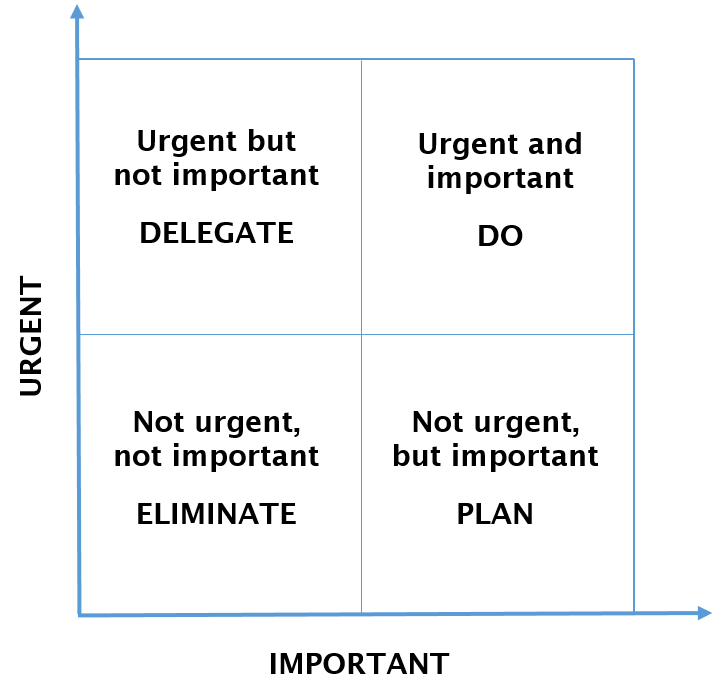
Write an example of when you have demonstrated time management skills.
MODULE 3 Into Action - Get to Work
Change management
Managing and foreseeing change using different methods and data.
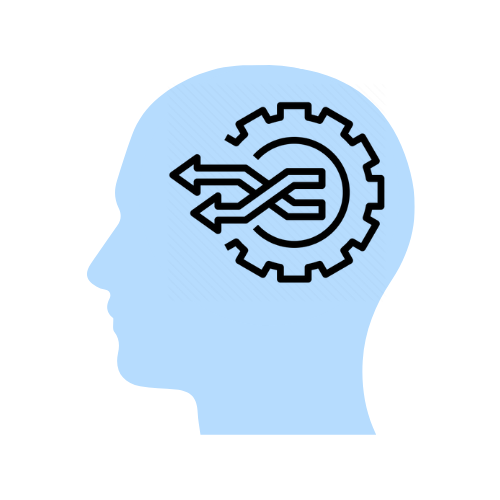
Introduction to the soft skill
Change management at work refers to an individual’s ability to understand, anticipate and manage change at systemic and practical levels, the ability to understand the ‘bigger picture’ behind it, and to adapt the actions to changes in a fast-moving environment to achieve the desired outcomes. This includes identifying the next steps and purposeful actions, planning, implementing and evaluating actions, by seeking input from others and the environment, research, other sources of information to enhance decisions.
Change management takes place at a work implementation level and also on a personal skills and competences level and in their adaptation to a working environment and the changing employment landscape.
Why is this an important skill?
Change management is important at two levels:
Firstly, it is highly valued by employers in potential employees as it is needed in anticipating changes in the work environment and adapting to them. This ranges from environmental issues, such as sector-related and work-life related trends, for instance, raw material supply, to adapting into change situations inside organisations, for instance when integrating new methods into the organisation.
Secondly, on a personal level it refers to one’s ability to adapt skills and competencies to work life and in obtaining employment.
As the changes should be applied at organisational, work team and personal levels, a curious and analytical mind, continuous observation of the environment, the ability to evaluate options and take decisions, and people skills in making others adapt to change are important.
OERs + Icebreakers
Have a look at some of the following materials before completing the exercises. Reflect on how and when these skills have been applied by you or someone else.
-
- Embracing Change - Jason Clarke | TEDxPerth: https://youtu.be/vPhM8lxibSU
- Adapting to Change Requires Flexibility - Center for Creative Leadership: https://www.ccl.org/articles/leading-effectively-articles/adaptability-1-idea-3-facts-5-tips/
- Adapt Or Die: The Importance Of Adapting To Change In Business | Fred Chua in Customer Think http://customerthink.com/adapt-or-die-the-importance-of-adapting-to-change-in-business/
- The Seven Concepts of Change: https://www.prosci.com/resources/articles/seven-change-concepts
- The inner side of Organizational Change - Thijs Homam –TEDxAmsterdamED https://youtu.be/3n-c6iAKFgg
- How Simplification is the Key to Change - Lisa Bodell –TEDxNormal https://youtu.be/Qm172DbaSbc
Estimated time:
20 minutes
Exercises to help you develop this skill
Exercise 1: Past Changes
Overview:
In this exercise individuals will observe past situations where they have faced a change and analyse how they managed these changes.

Estimated time to complete: 25 - 40 minutes

Materials needed:
-
- Pen
- Post its
- Paper (A3) or a word document

Difficulty: Hard
The activity:
-
- Select a situation of change in your life that has taken place in the past. Choose the situation from one of the following options:
a) Own life (for example, family, birth of a baby, moving alone, etc.)
-
- b) Work life
-
- c) Studies
Name it and place it on the top of the A3 sheet as the main heading.
-
- Now observe it closer and list under the main heading all the main steps of the change and its process, what was done first, what next, etc. until you will have the whole process covered.
-
- Below the previous list, write elements that influenced on the change and on processing it as their own subheading and bullet-point lists under each sub-heading, such as:
a) What were the personal and environmental conditions?
- b) Did this impact you alone or were others involved too?
- c) Where did this take place?
- d) What kind of skills did you need?
- e) What kind of information did you need?
- Now, list the results:
- a) Short-term results
- b) Long-term results
- c) What was successful? What was not?
You can save the first four phases as an image or make a table of it with a computer.
- 5. Lastly, analyse your approach and success in the process:
- a) How did you manage the change?
- b) What did you learn from the process and how and where can you use the learnt?
- c) What was the psychological meaning of the process, for instance empowerment, self-confidence, etc.?
- d) What did/does the process enable?
- e) What are the other outcomes?
Exercise 2: Changing Environment
Overview:
In this exercise, individuals will be investigating how a megatrend of climate change can impact their work environment, and facilitate a change management process.

Estimated time to complete: 35 - 60 minutes

Materials needed:
-
- Pen
- Paper or a word document

Difficulty: Hard
The activity:
Trends, from sort-term to long-lasting megatrends, continuously impact on what we do, influencing, for instance, on legislation, raw materials, opinion leaders, and many other things. In this exercise you will be investigating how a megatrend of climate change can impact your work environment.
-
- Investigate the megatrend of climate change and think how it can impact on your profession or sector (where and what you work on, what you have studied) or where you currently work at. Observe it at least from the following points of view by looking at the big picture:
-
-
- a) The overall picture and perception of the work, for instance the fashion business, in particular the fast fashion, has been under scrutiny as a highly polluting business
-
-
-
- b) Resources
-
-
-
- c) People and their skills
-
-
-
- d) Legislation
-
-
-
- e) Competitiveness
-
-
-
- f) Users/consumers and their opinions
-
-
-
- g) Product/service
-
-
-
- h) Other
-
Use the downloadable template, while first, have a look at the example table about the fashion business below.
Write on the table how, why, where and when the changes would table place. As the topic is vast, you can modify the template by adding more rows, make your own template or other. You can also use post-it notes.
|
Write here your sector/field/business/work |
||||
|
|
How |
Why |
Where |
When (the timeline) |
|
The overall picture and perception of the work/sector |
The climate change will impact on the need toreduce the use of certain materials of a high negative environmental impact and carbon footprint. The garments and materials need to be recycled and upcycled The concept of fashion needs to be rethought from a fast-paced consumption towards a more sustainable way of consuming |
The fashion industry, especially fast fashion, is one of the biggest polluters causing a huge negative environmental impact. The user habits of fast-fashion garments need to be changed too.
|
Everywhere. |
Now. |
|
Resources |
The use of environmentally negative materials needs to be reduced. |
Certain materials, like cotton, consume plenty of natural resources and are otherwise harmful for the environment. There is a need to reuse, upcycle etc. materials too |
Everywhere. |
Now – see the detailed plan |
|
People and their skills |
Educating people on environmental approaches |
The knowledge and skills in the sector need to be updated in relation to environmental needs |
Everywhere. |
Now – see the detailed plan |
|
Legislation |
This is expected to be mandatory |
Due to the severity of the situation, governments are setting laws to protect the environment. Companies need to adapt to this |
Everywhere. Globally |
Now – see the detailed plan |
|
Competitiveness |
Sustainable approaches and fashion are becoming a must in relation to competitive markets |
People will stop buying clothes or buy them less, especially fast fashion. This will impact on the competitiveness |
Everywhere. Globally |
Now – see the detailed plan |
|
Users/consumers and their opinions |
Change consumer habits and viewpoints |
See above. The consumer opinions are changing towards more sustainable consumption |
Everywhere. Globally, especially the Western World |
Now – see the detailed plan |
|
Product/service
|
Upcycling, recycling, alternative materials, slow-fashions, repairing, etc. |
Due to legislation and customer requirements |
Everywhere. Globally, especially the Western World |
Now – see the detailed plan |
|
Other |
The power of opinion leaders Responsible companies |
The opinion leaders have the power to introduce new habits to people |
Everywhere. Globally Online |
Now – see the detailed plan |
-
-
- Now, define one solution to apply to the issue of change in a specific context linked to you:
-
-
- a) What is it?
-
-
-
- b) Why?
-
-
-
- c) Where is it done?
-
-
-
- d) How?
-
-
-
- e) By Whom (who are involved)?
-
- f) What are the resources?
-
-
-
- g) Timeline?
-
-
-
- h) Risks?
-
-
-
- i) What are the needs of the fast-changing environment and process? How to divert the change?
-
-
-
- j) How will you prepare people for it?
-
-
-
- k) How will you guide the process?
-
-
-
- l) How will you monitor the process and adapt it according to the new changes?
-
-
Write these down using the tool that best suits you.
-
-
- Finally, reflect on the process and define the five most important key points to the change management process in your example sector/field/work. How will you approach these?
-
Next steps and evidence-based story
Having completed these exercises, can you think of any evidence you have that demonstrates your change management skills? What would someone who knows you well say about your change management skills?
Remember that soft skills are not just learnt in the workplace! Draw from all your life experiences (both in and outside the workplace).
Look at the examples below for some guidance.
- In one product design project we made a1 to 1 size model to the customer using their specifications. In the next meeting, they suddenly told us that the specifications had changed and the model we had made to be remade and some parts of the model had to be designed again. This changed the whole project including time we could spent on design and model making. We had to make a new offer and negotiate about details with the customer and the companies that supplied components to model. We also made a new offer to the customer because of the changed and we compromised on the budget with the customer. In the end, the project was successful and we learned a lot about managing rapid changes in a process.
Write an example of when you have demonstrated change management skills.
MODULE 3 Into Action - Get to Work!
Problem solving
Solving problems by using different methods and data.

Introduction to the soft skill
Problem solving at work refers to an individual’s ability and willingness to identify, define and solve problems individually and in teams by exploring alternative and novel solutions, observing problems from different angles, and by using creativity and information from different sources while remaining positive, solution-oriented and being able to listen to others and change own viewpoint.
A problem-solving oriented person respects all information and experience, and combines these using common sense, and practical and general information.
Why is this an important skill?
Problem solving is highly valued by employers in potential employees as it is crucial for delivering any work task from the simplest to the most complex one. The existence of the organisation is already based on a need to be solved. Problem solving also helps innovation, renewing and saving resources. At the individual level, it can help to deliver the work and keep one motivated and less stressed.
Problems can be to the content, situation or context, general or specific. They can be simple and direct or complex and blurry, without right or wrong answers.
An open mind, a hands-on, positive and humble attitude, willingness to learn, a holistic view, maintaining a schedules, project planning, creativity, communication, multidisciplinary, the ability to make decisions, return to earlier phases if needed and start over, and change the point of view, respect everybody’s experience and knowledge, and involve people related to the problem are highly useful in problem solving.
OERs + Icebreakers
Have a look at some of the following materials before completing the exercises. Reflect on how and when these skills have been applied by you or someone else.
-
- Design Thinking; Solving Life’s Problems - Suresh Jakayar – TEDxCrenshaw https://youtu.be/UQYoWwHg3qA
- Tom Wujec: Got a wicked problem? First, tell me how to make toast https://youtu.be/_vS_b7cJn2A
- Wicked Problems &Multisolving - Systems Academy https://youtu.be/O8FMBBVb71k
- How to work with Wicked Problems – Kennisland https://youtu.be/HrWbicvDLPw
Estimated time:
30 minutes
Exercises to help you develop this skill
Exercise 1: My Problem-Solving Style
Overview:
This exercise will help with the identification of problem-solving styles through self-narration and analysis, identifying strengths and weaknesses, and it helps individuals transfer and exchange problem solving methods between different problematic platforms (work/academic, work life balance, different sectors).

Estimated time to complete: 15 - 30 minutes

Materials needed:
-
- Pen
- Paper or a word document

Difficulty: Easy
The activity:
Phase 1:
Choose one problem that you have solved for each of the following:
- One for problems you have solved at work within your own sector (if having work experience from own sector) or during practical assignments in university or practical training
- One for problems you have solved in another sector or type of work (this can also be e.g. a summer job or a hobby)
- One for everyday problems you have solved.
Look at the example below about a problem from everyday life
| Name of the problem and its context |
| The Hotel “Pet” |
| Describe the problem (A full description of the problem) |
| While residing in a hotel, I noticed a small bug in my room. Later I discovered that it was a cockroach. At that point, the problem had at least four levels:
1. Personal: I do not and cannot bring cockroaches home where they would spread and besides my home also other flats would risk being infested with cockroaches, hence making the problem bigger and more expensive.
2. New accommodation: I cannot bring them to the next hotel I will reside at, as they will spread there. In addition, the other customers might accidentally bring them to their homes too.
3. New/other customers in the current hotel: the new and other customers might also bring cockroaches home if the hotel is contaminated by them
4. Hotel: the reputation of the hotel may suffer from the cockroach infestation.
Therefore, one needs to alarm the hotel about cockroaches and be sure of not carrying any of them or their eggs in one's own luggage. |
| How did you solve the problem? Which methods did you use, why and how, who was involved? |
| 1. First, I informed myself about the bug using the Internet and people who knew more about them. I had a picture of the cockroach that I could show. The others were needed here for consulting. They were regular people.
2. Secondly, I informed the hotel about the issue using the photo. The hotel was the beneficiary of the piece of information.
3. Thirdly, I informed myself about the methods to check the luggage and clean objects from cockroaches. The internet was a useful tool for this as it contains plenty of information and I was at the airport.
4. Fourth, I informed my next hotel about the problem and asked them about clothing cleaning/washing, which could help me to get rid of any unwanted surprises. I also opened the luggage and searched through it using the information that was provided to me. The hotel staff assisted me with the process as part of their work.
5. Back home, I cleaned everything and used cold (minus degrees) and other methods to make sure that everything would be fine. I also informed the landlord about the issue.
As upsetting and disgusting the discovery was, I turned it into an opportunity by creating this problem-solving example about it and hence solving another problem with it, the lack of an example. Telling the cockroach story to my colleague enabled me to understand how this experience was an example of problem-solving. The colleague participated as a chatting peer and hence a person who contributed in turning the negative adventure into a productive opportunity. |
| What was the outcome? What worked? What would you do differently? |
| What worked:
- I hope that the cleaning worked as otherwise the story would have a new twist. - Turning the experience into another opportunity that was also shared with colleagues and used as raw material for work.
What did not work: I truly hope that the cleansing worked… |
| Which methods did you use to solve the problem? |
| - Information search: visual and verbal
- Verbal Inquiry about the bug and actions to take to cleanse and secure the luggage from cockroaches - A systematic approach through the whole process Creativity, playfulness and storytelling when turning the negative story into an opportunity and into this example. |
Now it is your turn. Fill in the downloadable template for each of the three problems you selected (one template for each problem).
Phase 2:
Once you have filled in all three tables, compare and analyse them:
- What do the three cases/categories have in common regarding your problem-solving style? Do you, for instance, collaborate with others or do things alone?
- What is different between the three cases/categories?
You can, for example, highlight similarities and differences or use another method that best suits you.
Phase 3:
Analyse your problem-solving style using the three cases you just created and the list of elements below that facilitate problem solving:
- An open mind, creativity
- Hands-on
- Positive and humble attitude
- Willingness to learn
- A holistic view
- Keeping schedules, project planning
- Communication
- Multidisciplinary
- The ability to make decisions, iterate and change the point of view, respect everybody’s experience and knowledge
- Involving people related to the problem
Are you, for example, a creative, playful or a logical problem-solver? Do you prefer to solve problems with others or alone? Is your style more hands-on or abstract or something in between? Do you only use words or draw and write things on paper? What else?
Write your problem-solving style on a sheet of paper, for instance “My way to solve problems is…” and write down your style and its variations. Highlight or mark in another way what are your strengths in problem-solving and do this with another colour for your development points in problem-solving. Keep the paper and come back to it later to see how your problem-solving style and skills have developed.
Think also about which problem-solving style you could use in another context.
Exercise 2: From Blurry to Clear
Overview:
In this exercise, individuals will be solving a blurry problem (also called a wicked problem) that is not directly linked to the individual’s own sector. Learners will be using narration as the source of the activity, and designing approach for solution.

Estimated time to complete: 15 - 30 minutes

Materials needed:
-
- Pen
- Paper or a word document

Difficulty: Hard
The activity:
- Select a problem you read about in the media, the problem should not be directly linked to your sector. Select a complex and blurry problem with no clear answer, for instance homelessness, to solve.
- Once you have selected your problem, start investigating it deeper in order to gain insight and understand its complexity. Use a mind-map for this purpose. For the mind-map, take a big sheet of paper and place your article or the name of the problem at the centre of the paper. Then start adding layers of issues related to it.
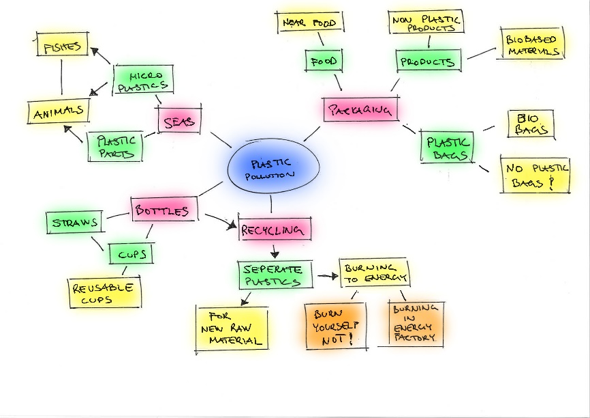
- Once you have created sufficient insight, start creating 3–5 concepts of potential solutions. A concept is a rough presentation of an idea or a solution. It often has visual material and text. As the problem might be complex and big, you may focus on a smaller part of it for solutions.
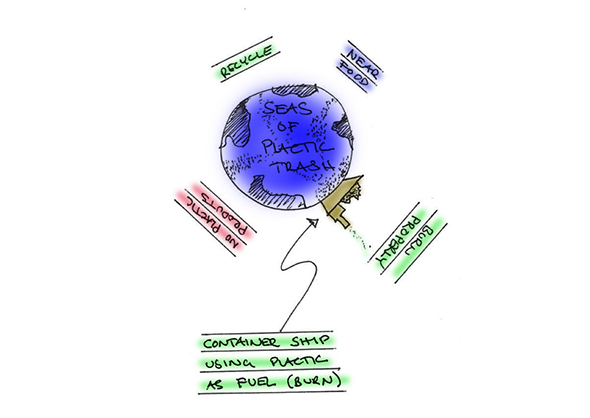
- Discuss about the concepts with people (real target groups) and test the initial concepts this way. Make notes of your findings.
- Analyse your noted concepts. Based on the results, choose your final solution and develop this into the final solution. Keep the solution feasible and do not forget the common sense.
- Based on the discussions, reflect about the three concepts and how well you managed to find a potential solution for the moment. Reflect also on:
- How well did you manage to capture the overall complexity of the problem?
- Are your solutions useful and beneficial for the target groups?
- How easy or difficult are the solutions to implement? Are there enabling and hindering factors? Are they expensive?
- What did you learn about the process and the complex problems?
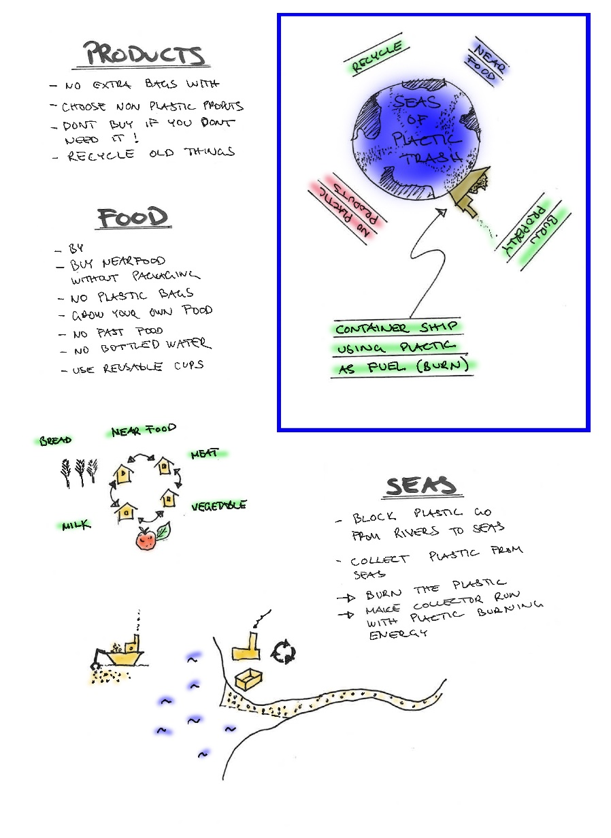
"The Solution"
Next steps and evidence-based story
Having completed these exercises, can you think of any evidence you have that demonstrates your problem-solving skills. What would someone who knows you well say about your problem-solving skills?
Remember that soft skills are not just learnt in the workplace! Draw from all your life experiences (both in and outside the workplace).
Look at the examples below for some guidance.
- I often try to support others in problem-solving by listening to them, asking them questions and making new suggestions like ‘how about…’. This way they are more supported to define the problem, find novel solutions, and have someone’s viewpoint which can unblock thinking and assist solving a problem.
- The example in the exercise 1 (The Hotel “Pet”) shows how a negative experience became an opportunity to use it as training material and how this way the problem of creating an example.
Write an example of when you have demonstrated problem solving skills.


